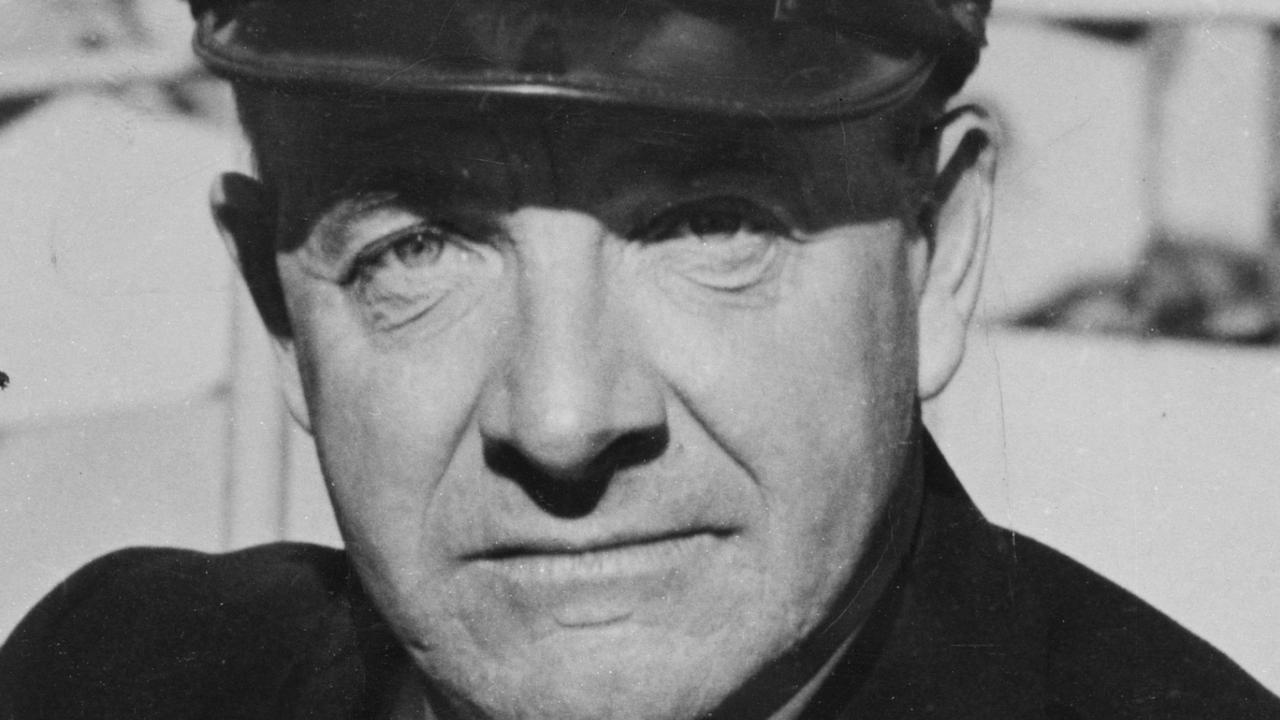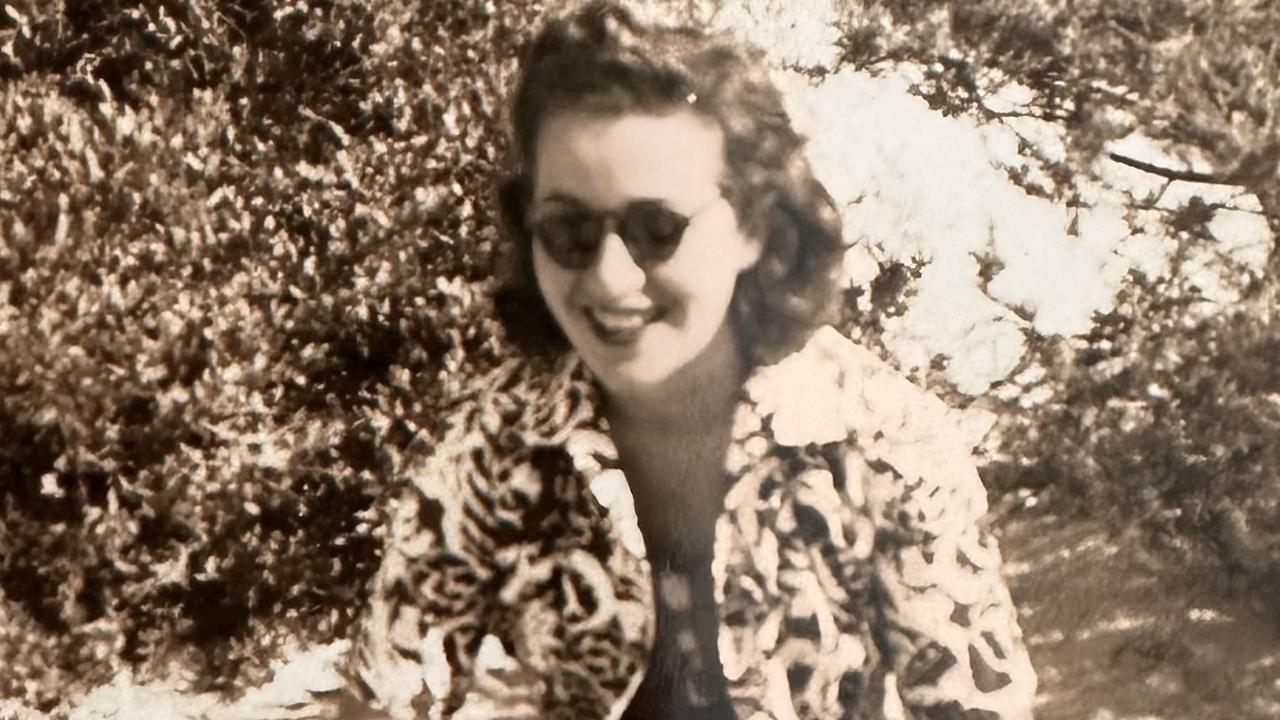Tragedy launched conspiracy theory of Titanic proportions
MEMORABILIA from the ill-fated Titanic are displayed with items from her equally luxurious sister-ship Olympic, nominated by conspiracy theorists as the vessel that really sunk in mid April, 1912.

Today in History
Don't miss out on the headlines from Today in History. Followed categories will be added to My News.
LETTERS and songbooks among memorabilia from the ill-fated Titanic in a Sydney exhibition are displayed with items from her equally luxurious sister-ship Olympic, nominated by conspiracy theorists as the vessel that really sunk in the Atlantic Ocean overnight in mid April, 1912.
In the months after the disaster that claimed the lives of 1517 crew and passengers, hundreds of items connected with both vessels built in Belfast for the White Star Line were donated and auctioned in Britain and the US.
More than 375 items, including crockery and a pamphlet from a Titanic memorial service at St Mary’s church in Southampton, England, where the Titanic sailed for her only voyage and home to 500 Titanic crew members, are on display at the Byron Kennedy Hall, Moore Park.
The exhibition, organised by American collector Tom Zaller’s Imagine Exhibitions, opened for an unspecified period to coincide with the 105th anniversary of the Titanic sinking. In almost 32 years since French and American scientists discovered the Titanic wreck in the North Atlantic Sea, recovery missions have recovered 6000 items from the ocean floor beneath 3700m of water. The ship had broken into two main sections, which lay about 600m apart.


Recovered artefacts include children’s leather shoes, a man’s waistcoat and 62 of 65 vials of perfume carried by English perfume maker Adolphe Saalfeld, who survived the sinking on April 15, 1912.
The Titanic exhibition includes promotional photographs and brochures for the Titanic and her older sister ship Olympic, which departed Belfast bound for Liverpool, her port of registration, on May 31, 1911.
Both ships, and a later model the Britannic, were designed and built by Harland and Wolff, who employed about 15,000 men in Belfast. Harland and Wolff had built ships for the White Star Line since 1867 and were given considerable latitude in designing the ships. White Star generally provided sketched concepts which shipbuilders transformed into a ship design, with Harland and Wolff authorised to spend what it needed on each ship, plus a 5 per cent profit margin. The Olympic and Titanic each cost £3 million.
Harland and Wolff director Lord William Pirrie, also a director of White Star Line, oversaw the design of both ships, advertised as the “Largest Steamers in the World; 882½ feet long; 45,000 tons each” in brochures included in Titanic The Exhibition.
Another brochure on display is a pre-launch plan given to prospective clients in 1911 of Titanic/Olympic cabins, gymnasium, dining rooms, grand staircase and other interiors.

A century after the Titanic tragedy, similarities between the Titanic and Olympic, which collided with British cruiser HMS Hawke off the Isle of Wight on September 20, 1911, inspired theories that the sunken ship was the Olympic. British plasterer Robin Gardiner explored the theory in his 2012 book, Titanic: The Ship That Never Sank? Gardiner argued that the Olympic was disguised as the Titanic in an insurance scam by owner International Mercantile Marine Group, controlled by US financier John “J.P.” Morgan, which acquired White Star in 1902. The Olympic exterior profile was almost identical to Titanic, apart from the number of portholes on forward C decks, window spacing on the B decks, and the enclosed forward section of the A deck promenade on the Titanic.
Gardiner proposed that insurers refused to pay for Olympic’s £500,000 repair because an inquiry cleared the Navy vessel of wrongdoing, placing blame on Olympic Captain Edward Smith, also at the helm of the Titanic in 1912. Gardiner suggests the Olympic collision may have caused more serious damage than its owners admitted.

Filmmaker David Davenport in Titanic, The Shocking Story (2012), alleged Morgan was shipping gold and other treasures to safety in the US.
“Swapping the identities of Olympic and Titanic was the opportunity for Morgan, with the collusion of the British government, to quietly ship £8 million of gold to the US,” Davenport explained. He agreed White Star Line could not afford repairs so the Olympic “was patched up but would not have passed its next safety inspection”. His documentary argued that White Star Line chairman Bruce Ismay and Morgan decided to switch Olympic for the Titanic before Titanic’s maiden voyage sailed from Southampton on April 10, 1912. It was alleged shipyard workers were paid to change names on the vessels, life rafts and life jackets, supported by images of the sunken ship in 2006 that showed an M and P engraved beneath two missing letters of the Titanic name plate.
Davenport said the Olympic was holed on its starboard side, exactly where Titanic hit an iceberg six months later, and more than 50 Titanic passengers cancelled their bookings at the last minute. Gardiner and Davenport suggest another ship, the Californian, was to rendezvous with the Titanic and rescue all on board. A navigational error saw the Titanic hit an iceberg 20km from the rendezvous point, to sink without the Californian being alerted.
* Titanic The Exhibition, Byron Kennedy Hall, Moore Park; $18-$70, titanictheexhibition.com.au


